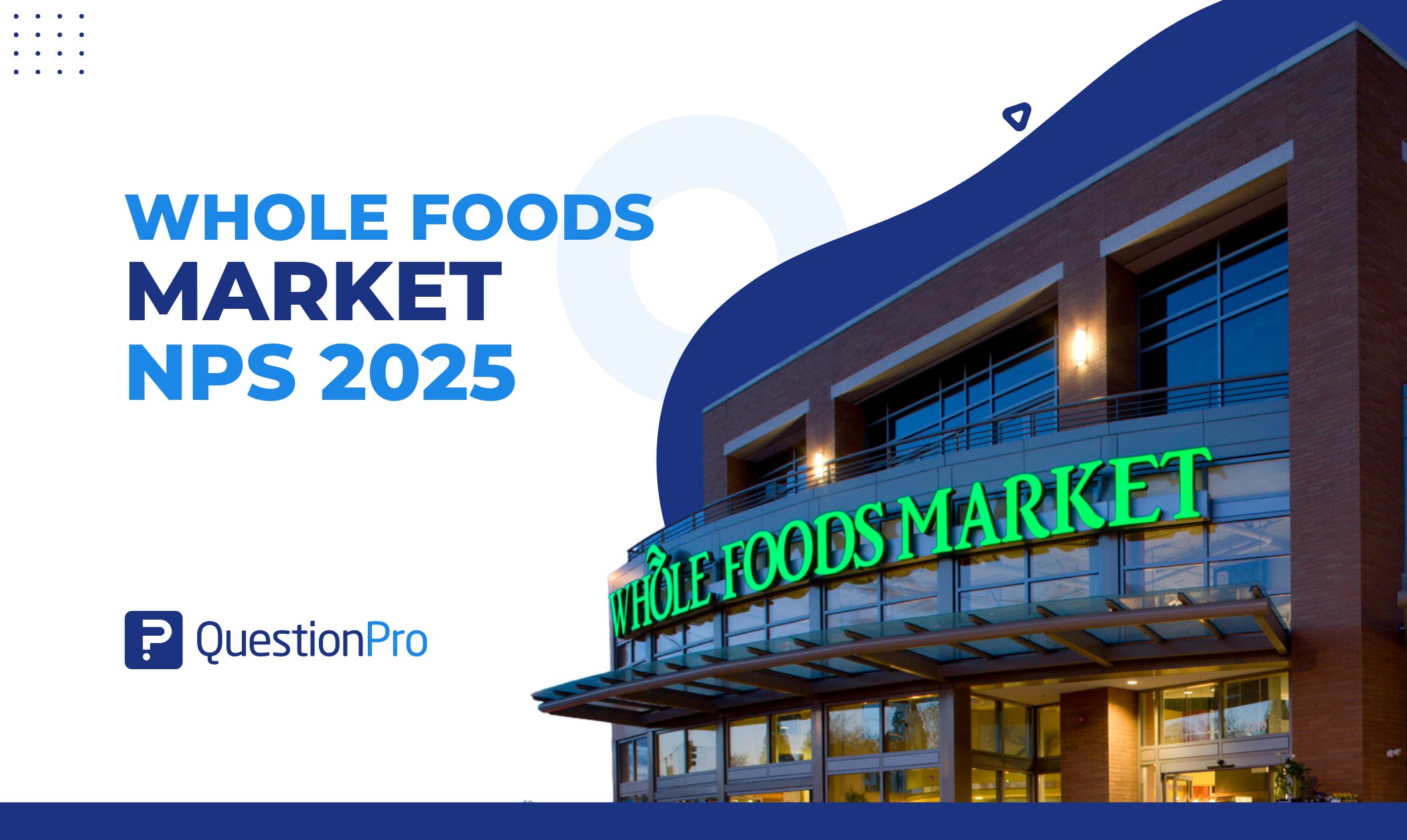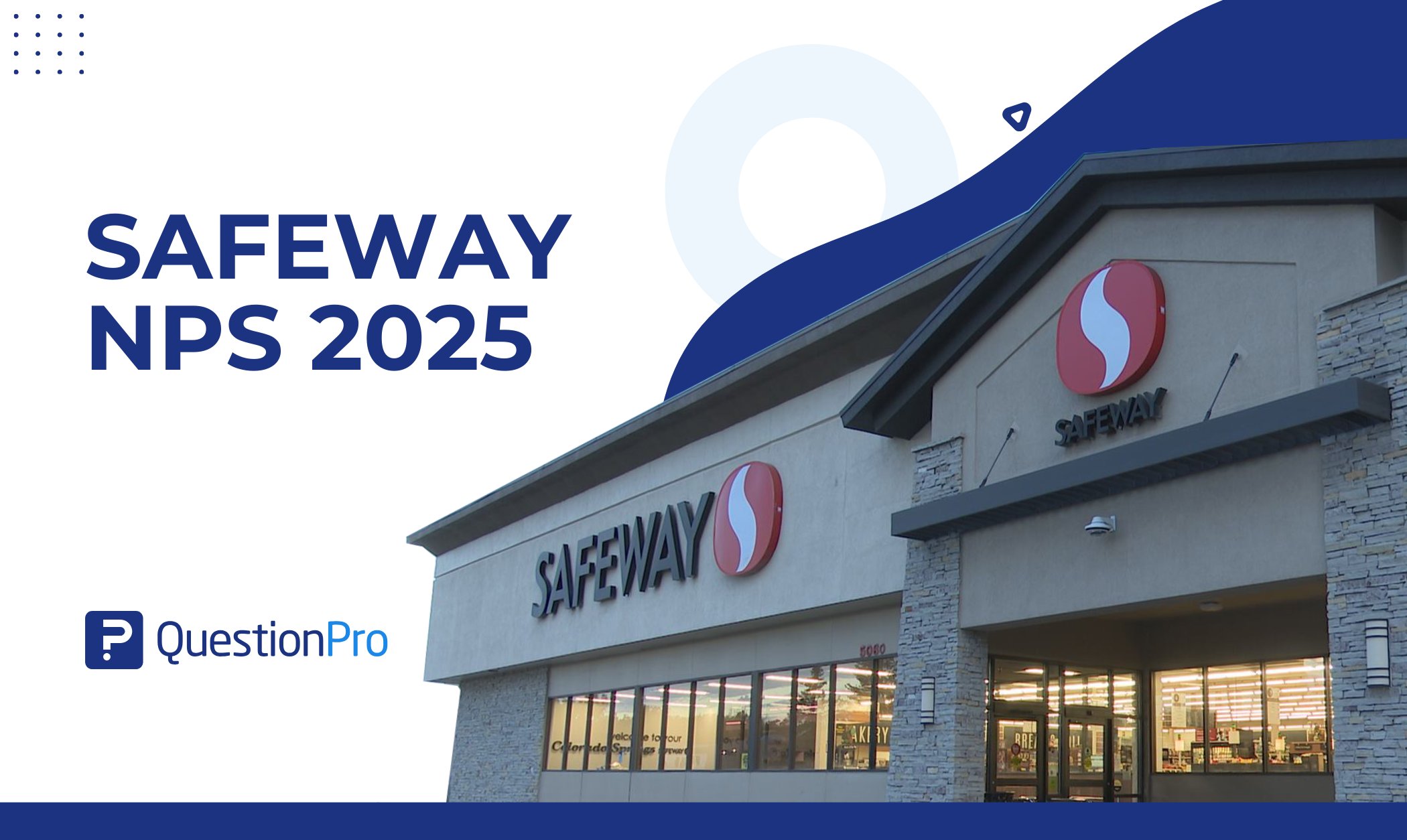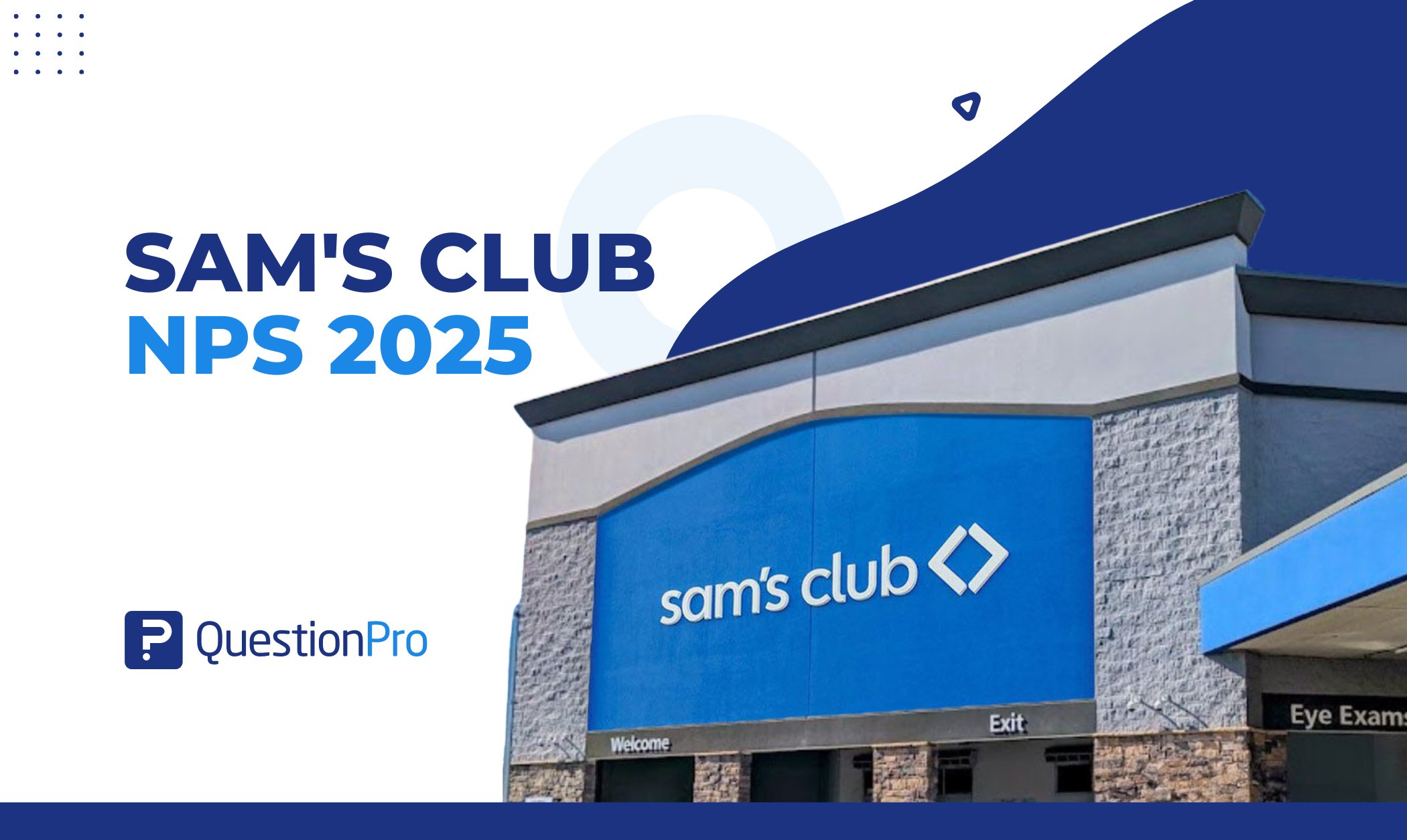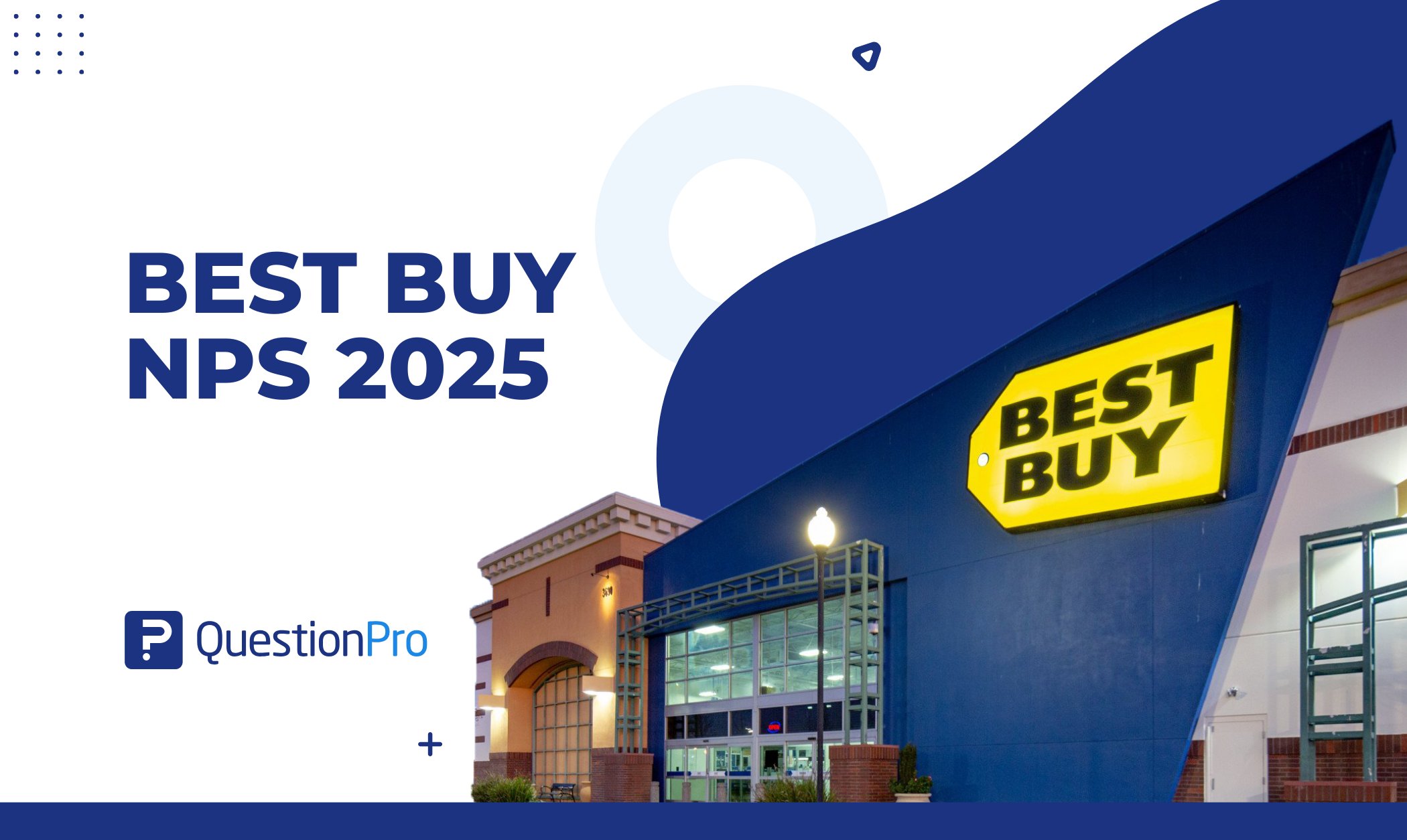
Ever rave to a friend about where you got your latest tech gadget? Maybe the store had exactly what you needed. Check out was a breeze, and someone even helped you find the correct charger without you having to ask. The urge to recommend a brand is what Net Promoter Score (NPS) is all about.
In this blog, we’re diving into Best Buy’s 2025 NPS performance to see how it stacks up in the retail world. We’ll explain what NPS tells us, how it’s calculated, and what Best Buy’s NPS score reveals about the experience it’s delivering to today’s shoppers.
What is Net Promoter Score?
Net Promoter Score, or NPS, is a metric that helps businesses understand how their customers feel about their brand. It’s especially popular in sectors like grocery and retail because it provides a fast and precise snapshot of customer satisfaction and loyalty.
The process begins with one standardized question:
“On a scale of 0 to 10, how likely are you to recommend us to a friend or colleague?”
Based on how people respond, they’re grouped into three categories:
- Detractors (0–6): Unhappy customers who may discourage others from choosing you.
- Passives (7–8): Satisfied but unenthusiastic, these customers aren’t spreading the word.
- Promoters (9–10): Loyal fans who actively recommend your business.
To calculate your NPS, you use a simple formula:
NPS = % of Promoters – % of Detractors
That’s it. Your final score reflects the overall health of your customer relationships. A high NPS signals strong loyalty and satisfaction. A lower score can reveal friction points or unmet expectations.
Wondering if your score is “good”? That’s where industry NPS benchmarks come in. Comparing your NPS to others in your field helps you understand how you stack up—and where there’s room to improve.
In essence, NPS is more than just a number. It’s a direct line to your customers’ perceptions and an early indicator of brand advocacy—or warning signs.
Best Buy NPS Performance Score
Best Buy is doing better than most when it comes to customer loyalty. According to QuestionPro’s Q1 2025 Benchmarking NPS and CSAT Report, the average NPS for the retail industry sits at 37. Best Buy tops that with a score of 43, a clear indicator that its customers are more likely to recommend it to others.
Here’s a quick look at the breakdown:
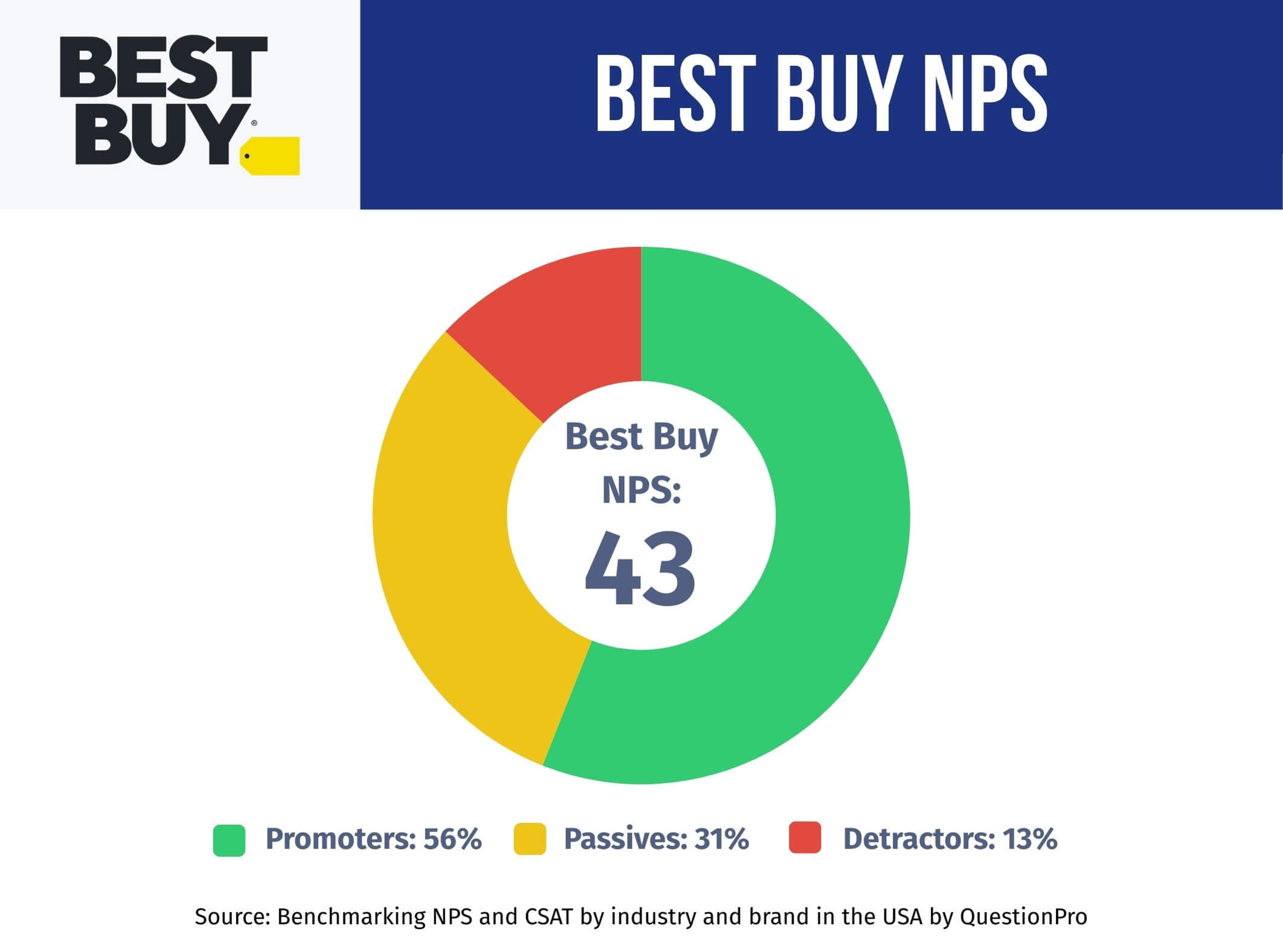
- Promoters: 56%
- Passives: 31%
- Detractors: 13%
With more than half of the respondents falling into the Promoter category, Best Buy earns the loyalty most brands strive for. The relatively small number of Detractors also suggests that negative experiences are less common.
In short, Best Buy isn’t just meeting expectations, it’s exceeding them. A higher-than-average NPS means the brand successfully creates positive, memorable experiences that keep customers returning and telling their friends.
How Best Buy Compare to Retail Industry Benchmarks?
Best Buy is performing above the retail industry average in terms of customer satisfaction and loyalty. According to QuestionPro’s Q1 2025 Benchmarking NPS and CSAT Report, the average Net Promoter Score (NPS) in the retail space is 37, and Best Buy edges ahead with a score of 43.
That gap may seem modest, but it reflects a stronger connection with customers. More shoppers are leaving with a positive impression, and they’re willing to recommend Best Buy to friends and family.
In an industry where competition is fierce and customer expectations are high, this higher-than-average NPS shows that Best Buy is doing something right. It’s a good indicator that their efforts in service, product selection, and overall experience are making a difference.
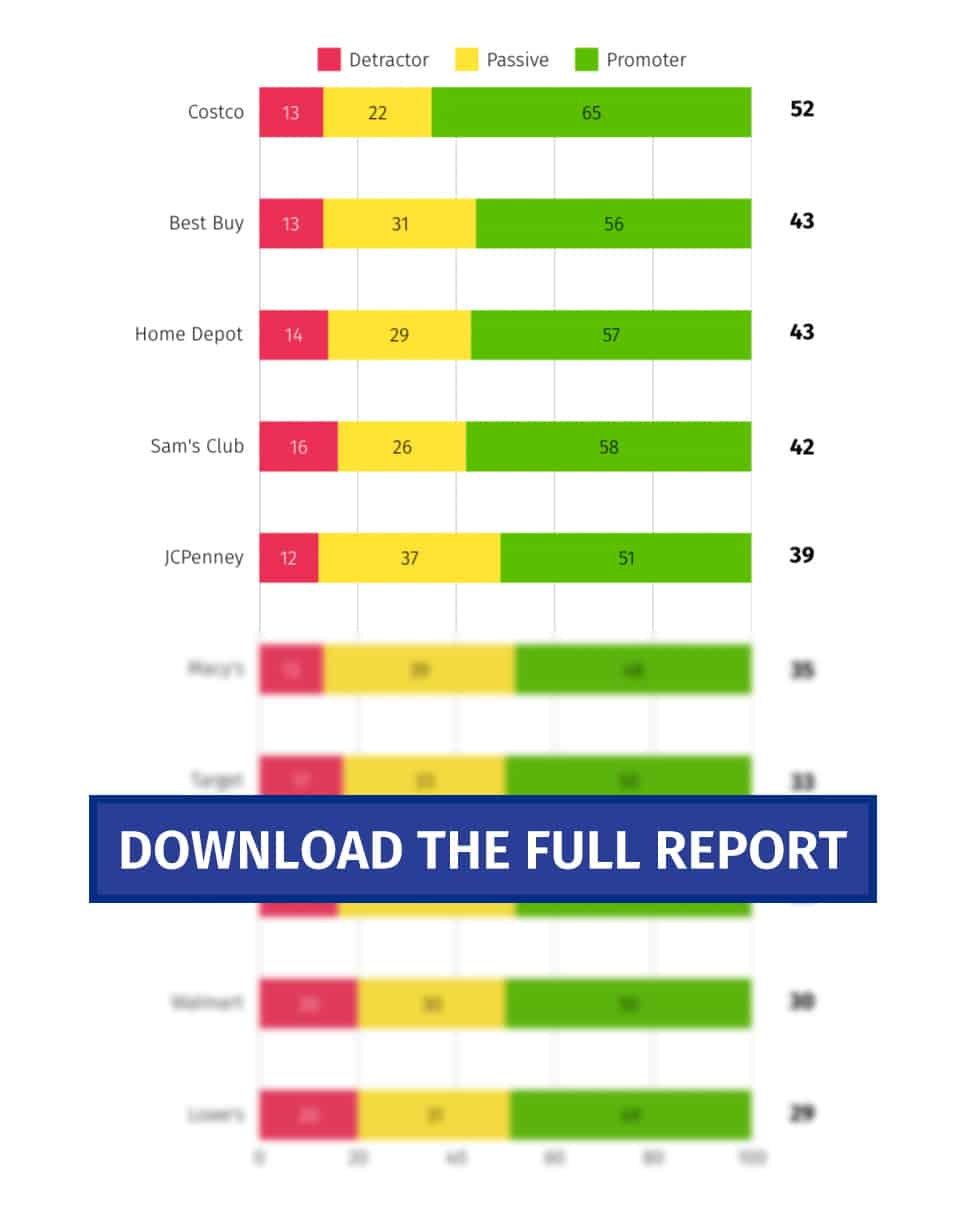
These insights are based on QuestionPro’s latest study, which surveyed 1,000 participants to measure the NPS of various companies and industries. The report reflects real customer opinions from Q1 2025 and is updated quarterly.
What’s Driving Best Buy’s NPS Performance?
Best Buy’s strong Net Promoter Score of 43, reported in QuestionPro’s Q1 2025 Benchmarking Report, reflects a clear focus on creating a better customer experience. Several key efforts are likely behind this positive result:
- Putting Customers at the Center
Best Buy invests in personalization—customized app screens, tailored deals, and product recommendations—to keep customers engaged. They’re also making expert help more accessible, with well-trained in-store and online staff. Add in seamless online-to-store shopping and a price-matching policy, and the overall experience feels both convenient and trustworthy.
- A Loyalty Program That Actually Feels Rewarding
The My Best Buy membership program offers tiered perks like free shipping, early access to deals, extended returns, and tech support. These benefits encourage repeat visits and make customers more likely to recommend Best Buy to others.
- Smart Use of Technology
From AI-powered customer support to better product discovery tools and AR features in the app, Best Buy is using tech to simplify shopping and solve problems quickly.
- Better In-Store Experience
Stores are being redesigned based on customer shopping patterns, with improved layouts and refreshed product displays. Dedicated experts in each department ensure shoppers get the help they need.
- Focus on Employee Training
More staff and better training mean more knowledgeable service, which directly impacts customer satisfaction and NPS.
How to Measure and Improve Your NPS?
Improving customer loyalty starts with knowing where you stand, and that’s exactly what Net Promoter Score (NPS) helps you do. With QuestionPro, measuring and boosting your NPS is simple, insightful, and actionable. Here’s how to get started:
1. Set Up Your NPS Survey
Begin with the classic NPS question:
“On a scale from 0 to 10, how likely are you to recommend our company to a friend or colleague?”

With QuestionPro, you can use a pre-built survey template and add an AskWhy question to understand the reasons behind each rating. This gives you more context, not just a number.
2. Reach the Right People
Distribute your survey across the channels that matter most, such as email, SMS, QR codes, social media, or direct links. If you want targeted insights, tap into QuestionPro Audience to find respondents by demographics, behavior, or industry.
3. Monitor Feedback Instantly
As responses come in, your NPS is calculated automatically. You’ll see a live breakdown of your Promoters, Passives, and Detractors, along with real-time trends and insights on your dashboard.
4. Use the Insights to Improve
The power of NPS comes from what you do with the feedback. Identify weak spots and take focused action, whether it’s improving customer service, tweaking a process, or enhancing your product.
QuestionPro also gives you access to benchmark data, so you can see how your score compares to others in your industry.
NPS isn’t just about measuring satisfaction. It’s about understanding your customers and making changes that keep them coming back. With QuestionPro, the process is easy to manage and built for results.
Stay Informed: Get the Q1 2025 NPS Benchmark Report
Want to know how your brand measures up in customer loyalty? The Q1 2025 NPS Benchmark Report reveals how top companies are earning trust and turning customers into promoters.
Get insights into industry benchmarks, see where you stand, and learn what the best in the business are doing to stay ahead.
Need help improving your score? QuestionPro’s experts can guide you with personalized strategies to boost satisfaction and retention.
Best Buy isn’t the only company in the grocery industry with valuable lessons for those looking to improve their customer service and experience. Below, we recommend a few articles where you can learn how other major brands manage to maintain a high NPS and a loyal customer base — you’ll surely find some useful insights along the way.




